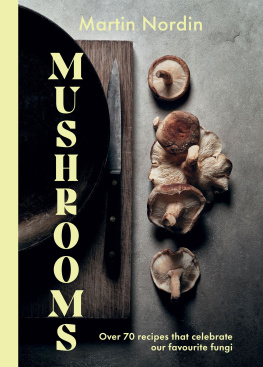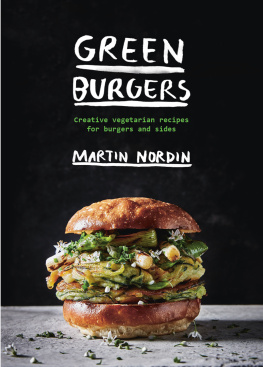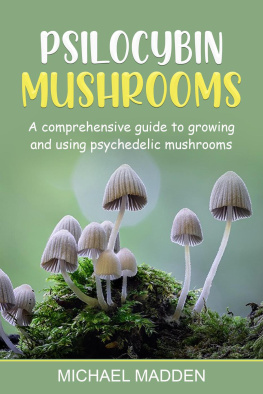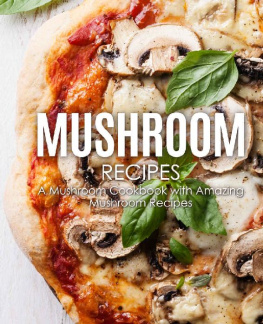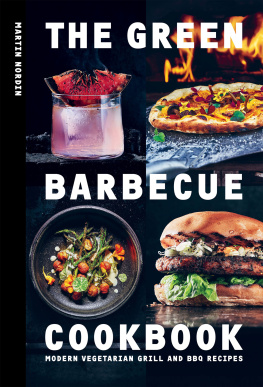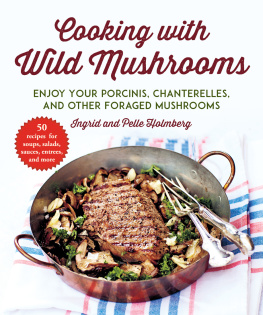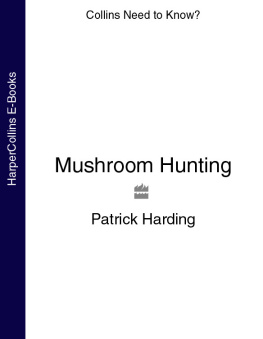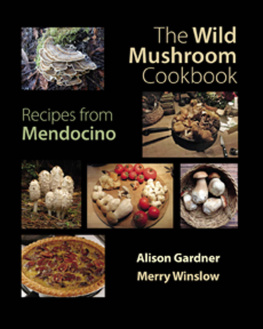

Mushrooms! Glorious mushrooms! Oh, how I love mushrooms! That might sound like a silly line from a childrens song of the 70s, but thats really how I feel.
This book is about cooking mushrooms. Because its true I love mushrooms. In all their forms. And I have done so for as long as I can remember. My mother used to make creamy mushroom soup during the week, and at the weekends and for celebrations we would have mushroom-stuffed mushrooms, creamy mushroom mince on croustades, mock snails and some kind of sauce or stew smelling of white wine. In all of these, I remember the mushrooms more than any other ingredient. And that, I suppose, is the genesis for this book. Much of the food that I cook features mushrooms as a component perhaps not always as the main ingredient, sometimes starring as the understudy in a broth or as another flavour agent.
But this isnt a book about how to pick mushrooms there are plenty of great books all about that topic already. I own several of them and frequently dream of going out into the woods and finding my own mushroom treasures at an undisclosed location that can be returned to year after year when in season. And it goes without saying that I would love to feel absolutely confident about which mushrooms I can eat, while avoiding picking those that should remain untouched in nature. So if you feel the same way, I recommend that you buy a book like that.
Most of the mushrooms in this book are cultivated. Cultivation is beginning to take place on a larger scale than before. This means that you will find a wider variety of mushrooms in the supermarket and that even mushrooms that were previously imported from distant Asia (such as shiitake) are now grown in many different countries. In this respect, everything from major mushroom farms to smaller urban growers and the grow-it-yourself trend have really taken off. The oyster mushroom is one of the easier ones to cultivate, while other varieties like shiitake, nameko and so on require more specific conditions, including precise temperatures and special light. And weve still not found a way to cultivate mushrooms like chanterelles. But isnt it exciting to have mushrooms that are still predominantly led by the seasons and conditions in nature?
In recent years, I have been particularly inspired by the cuisines of Asia Japan, Korea, Vietnam, Thailand and Taiwan largely due to their techniques and thinking around balancing flavours and textures. Of course, I am also fascinated by Nordic cookery as a whole, with a particular penchant for the dairy heartlands of southern Sweden and the county of my childhood, Skne, which is where all my memories of my mothers and my grandmothers food are set. As I grew up, I developed an interest in French and Italian food thanks to restaurant visits, and later when my passion grew further, thanks to cookery shows and books, they were joined by the rest of the world. However, Asia is perhaps just ahead of the pack, meaning that I often end up with a mix of everything and a little too much soy sauce.
Ive also chosen to make all the recipes in this book completely plant-based, so if you are a vegan then you can get cracking too. If you want to substitute a nut butter or milk for dairy-based milk or cream, or if you prefer to use regular butter instead of oil, then thats fine. After all, the inspirations for several of these dishes would have originally used dairy. Youre the head chef in your own kitchen its up to you! I just hope that I can inspire you to create some new flavour memories!
The mushrooms we eat
With the exception of chanterelles and porcini, virtually all the mushrooms that we buy in stores are cultivated. (Porcini mushrooms are actually the worlds most widely used non-cultivated mushroom in commercial settings.) So how does this work? Well, in order for mushrooms to grow we need mycelium a root-like network that supplies the fruiting body with nutrients and a substrate in which the mushrooms can grow. The substrate can really be anything from compost and sawdust to straw, logs or even coffee grounds. Then it is vital to find the right temperature and light conditions to ensure that the mushrooms are happy. Then, hey presto, you have a mushroom farm. In the case of some mushrooms that are easier to cultivate, its perfectly possible to buy what you need and try it at home for yourself.
Given that many of the mushrooms in this book are cultivated, there is no need to clean and trim all of them. However, do pay attention to those that are grown wild or cultivated in soil (such as champignons, chanterelles and porcini). With these varieties, be sure to brush off any earth and cut away any parts that appear to be damaged beore using them for cooking.
The healthy mushroom
Mushrooms are not only delicious, they are also fantastically healthy. Its therefore no surprise that mushrooms have become a regular fixture in plant-based cookery. They also have a powerful umami flavour that means they are a good meat alternative.
All mushrooms are incredibly low in fat but rich in essential minerals and nutrients. The champignon is rich in vitamin B, iodine, potassium and iron. Whats more, it is the mushroom that is best for our immune systems. Champignons are actually one of the few non-animal foodstuffs to contain vitamin B12. Vitamin B12 is primarily found in animal-based foods such as meat and fish, as well as some dairy products. Foods that have been fermented that have been proved and which contain lactic acid also usually contain a little vitamin B12.
Chanterelles are not only beautiful and tasty, they also contain a lot of useful nutrients, such as proteins and plenty of dietary fibre, which help the digestion. In addition, there are healthy minerals like selenium, manganese, zinc, calcium and iron. And dont forget that chanterelles are rich in vitamin C and D. However, the vitamin C disappears if the mushrooms are cooked, although vitamin D is always preserved when cooking. Vitamin D is good for our skin and our immune systems, while also making a contribution to preventing osteoporosis.
Im not going to go over all the types of mushrooms here, but if you want to know more about the most common mushrooms that are cultivated and sold, then search on the internet for mushroom growers near you and explore their websites.

Which mushroom should I choose?
The number of mushroom species that are available is constantly on the rise. I really do urge you to be bold and try making the dishes in this book using your favourite mushroom. Here is a compilation of the mushrooms that I buy frequently, with a few words on their characteristics and how I use them.

Champignons
Champignons are the most widely cultivated mushrooms in the world. They have a mild flavour and are beautifully aromatic. When the cap of the closed, immature champignon parts from the stem, making the gills visible, it has a very full-bodied flavour.
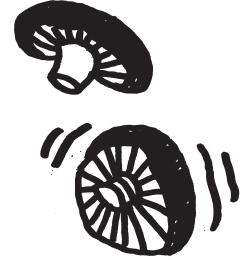
Portobello mushrooms
Next page
